Coburn J.W. Algebra and Trigonometry
Подождите немного. Документ загружается.


460 CHAPTER 4 Exponential and Logarithmic Functions 4-50
D. Applications of Logistic, Exponential, and
Logarithmic Functions
Applications of exponential and logarithmic functions take many different forms and
it would be impossible to illustrate them all. As you work through the exercises, try to
adopt a “big picture” approach, applying the general principles illustrated here to other
applications. Some may have been introduced in previous sections. The difference here
is that we can now solve for the independent variable, instead of simply evaluating the
relationships.
In applications involving the logistic growth of animal populations, the initial
stage of growth is virtually exponential, but due to limitations on food, space, or other
resources, growth slows and at some point it reaches a limit. In business, the same prin-
ciple applies to the logistic growth of sales or profits, due to market saturation. In these
cases, the exponential term appears in the denominator of a quotient, and we “clear
denominators” to begin the solution process.
EXAMPLE 14
Solving a Logistics Equation
A small business makes a new discovery and begins an aggressive advertising
campaign, confident they can capture 66% of the market in a short period of
time. They anticipate their market share will be modeled by the function
, where M(t) represents the percentage after t days. Use this
function to answer the following.
a. What was the company’s initial market share ( )? What was their market
share 30 days later?
b. How long will it take the company to reach a 60% market share?
Solution
a. given
substitute 0 for t
simplify
result
The company originally had only a 6% market share.
substitute 30 for t
simplify
result
After 30 days, they held a 20.4% market share.
b. For Part b, we replace M(t) with 60 and solve for t.
given
multiply by
divide by 60
1 10e
0.05t
1.1
1 10e
0.05t
6011 10e
0.05t
2 66
60
66
1 10e
0.05t
20.4
66
1 10e
1.5
M1302
66
1 10e
0.051302
6
66
11
M102
66
1 10e
0.05102
M1t2
66
1 10e
0.05t
t 0
M1t2
66
1 10e
0.05t
College Algebra—
cob19413_ch04_411-490.qxd 23/10/2008 01:58 PM Page 460 EPG 204:MHDQ069:mhcob%0:cob2ch04:
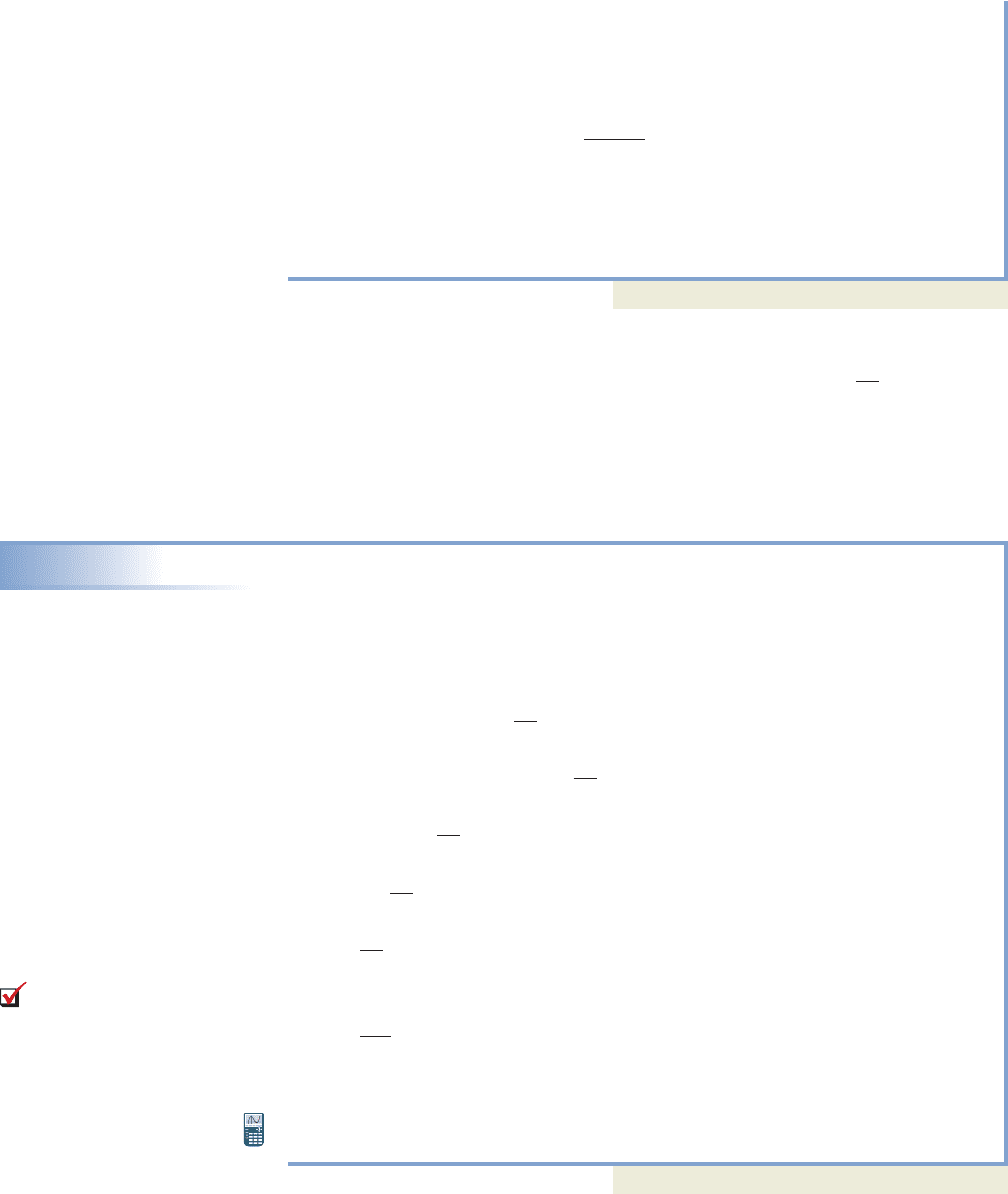
4-51 Section 4.4 Properties of Logarithms; Solving Exponential/Logarithmic Equations 461
subtract 1
divide by 10
apply base-e logarithms
Property III
solve for t (exact form)
approximate form
According to this model, the company will reach a 60% market share in about
92 days.
Now try Exercises 111 through 116
Earlier we used the barometric equation to find an alti-
tude H, given a temperature and the atmospheric (barometric) pressure in centimeters of
mercury (cmHg). Using the tools from this section, we are now able to find the atmo-
spheric pressure for a given altitude and temperature.
EXAMPLE 15
Using Logarithms to Determine Atmospheric Pressure
Suppose a group of climbers has just scaled Mt. Rainier, the highest mountain of
the Cascade Range in western Washington State. If the mountain is about 4395 m
high and the temperature at the summit is , what is the atmospheric
pressure at this altitude? The pressure at sea level is .
Solution
given
substitute 4395 for H, 76 for P
0
, and for T
simplify
divide by 7325
exponential form
multiply by P
divide by e
0.6
(exact form)
approximate form
Under these conditions and at this altitude, the atmospheric pressure would be
41.7 cmHg.
Now try Exercises 117 through 120
41.7
P
76
e
0.6
Pe
0.6
76
e
0.6
76
P
0.6 ln
a
76
P
b
4395 7325 ln
a
76
P
b
22.5 4395 330122.52 80004 ln a
76
P
b
H 130T 80002 ln
a
P
0
P
b
P
0
76 cmHg
22.5°C
H 130T 80002 ln a
P
0
P
b
92
t
ln 0.01
0.05
0.05t ln 0.01
ln e
0.05t
ln 0.01
e
0.05t
0.01
10e
0.05t
0.1
D. You’ve just learned how
to solve applications involving
logistic, exponential, and
logarithmic functions
College Algebra—
cob19413_ch04_411-490.qxd 11/23/08 13:55 Page 461

4.4 EXERCISES
CONCEPTS AND VOCABULARY
DEVELOPING YOUR SKILLS
Fill in each blank with the appropriate word or phrase.
Carefully reread the section if needed.
1. For the solution process is most
efficient if we apply a base logarithm to
both sides.
2. To solve we can combine
terms using the property, or add
to both sides and use the property.
3. Since logarithmic functions are not defined for all
real numbers, we should check all “solutions” for
roots.
ln1x 32
3 ln x ln1x 32 0,
e
0.02x1
10,
Solve each equation by applying fundamental
properties. Round to thousandths.
7. 8.
9. 10.
11. 12.
13. 14.
Solve each equation. Write answers in exact form and in
approximate form to four decimal places.
15. 16.
17. 18.
19.
20.
Solve each equation. Write answers in exact form and in
approximate form to four decimal places.
21. 22.
23.
24.
25.
26.
3
4
ln14x2 6.9 5.1
1
2
ln12x 52 3 3.2
4 log12x2 9 3.6
1.5 2 log15 x2 4
15 8 ln13x2 73 ln1x 42 5 3
250e
0.05x1
175 1175
150 290.8 190e
0.75x
10
2x
27 19010
x5
228 150
2 3e
0.4x
74e
x2
5 70
10
x
0.02410
x
18.197
e
x
0.343e
x
9.025
log x 1.6log x
1
4
ln x
1
2
ln x 3.4
4. The statement is an example of
the -of- property.
5. Solve the equation here, giving a step-by-step
discussion of the solution process:
6. Describe the difference between evaluating the
equation below given and solving the
equation given y 9.7: y 3 log
2
1x 1.72 2.3.
x 9.7
ln14x 32 ln122 3.2
log
e
10
log 10
log e
Use properties of logarithms to write each expression as
a single term.
27. 28.
29.
30.
31. 32.
33. 34.
35. 36.
37.
38.
39. 40.
41.
42.
Use the power property of logarithms to rewrite each
term as the product of a constant and a logarithmic term.
43. 44.
45. 46.
47. 48.
49. log
5
81 50. log
7
121
log 2
3
34log122
ln 10
3x2
ln 5
2x1
log 15
x3
log 8
x2
log
3
13x
2
5x2 log
3
x
log
5
1x
2
2x2 log
5
x
1
log
9
2 log
9
15log
2
7 log
2
6
ln1x
2
252 ln1x 52
ln1x
2
42 ln1x 22
ln1x 32 ln1x 12ln1x 52 ln x
log1x 22 log xlogx log1x 12
log
6
30 log
6
10log
3
28 log
3
7
log1x 32 log1x 32
log1x 12 log1x 12
ln1x 22 ln13x2ln12x2 ln1x 72
462 CHAPTER 4 Exponential and Logarithmic Functions 4-52
College Algebra—
cob19413_ch04_411-490.qxd 25/10/2008 11:56 AM Page 462 EPG 204:MHDQ069:mhcob%0:cob2ch04:

Use the properties of logarithms to write the following
expressions as a sum or difference of simple logarithmic
terms.
51. log(a
3
b) 52. log(m
2
n)
53. 54.
55. 56.
57. 58.
59. 60.
Evaluate each expression using the change-of-base
formula and either base 10 or base e. Answer in exact
form and in approximate form using nine decimal
places, then verify the result using the original base.
61. log
7
60 62. log
8
92
63. log
5
152 64. log
6
200
65. log
3
1.73205 66. log
2
1.41421
67. log
0.5
0.125 68. log
0.2
0.008
Use the change-of-base formula to write an equivalent
function, then evaluate the function as indicated (round
to four decimal places). Investigate and discuss any
patterns you notice in the output values, then determine
the next input that will continue the pattern.
69.
70.
71.
72.
Solve each equation and check your answers.
73.
74.
75.
76.
77.
78.
79.
80. log
13x 132 2 log x
log
12x 12 1 log x
log x 1 log
1x 92
log1x 152 2 log x
log14 3x2 log
145 2
log12x 52 log
78 1
log 5 log1x 92 1
log 4 log1x 72 2
H1x2 log
x; H1122, H122, H122
3
2
h1x2 log
9
x; h122, h142, h182
g1x2 log
2
x; g152, g1102, g1202
f1x2 log
3
x; f 152, f1152, f1452
ln
a
x
4
2x
2
4
2
3
x
2
5
bln a
7x13 4x
21x 12
3
b
log
a
B
3
3 v
2v
blog a
A
x 2
x
b
ln
a
m
2
n
3
bln a
x
2
y
b
ln
11
3
pq2ln1x1
4
y2
Solve each equation using the uniqueness property of
logarithms.
81.
82.
83.
84.
85.
86.
Solve each logarithmic equation using any appropriate
method. Clearly identify any extraneous roots. If there
are no solutions, so state.
87.
88.
89.
90.
91.
92.
93.
94.
95.
96.
97.
98.
99.
100.
101.
102.
103. 104.
105. 106.
107. 108.
109. 110.
111. 112.
80
1 15e
0.06x
50
250
1 4e
0.06x
200
a
1
5
b
x1
a
1
2
b
3x
5
2x1
9
x1
7
x
4
2x1
2
x1
3
x
9
5x3
78,4625
3x2
128,965
6
x2
35897
x2
231
ln x ln1x 22 ln 4
log1x 12 log x log1x 32
ln 6 ln15 r2 ln1r 22
ln12t 72 ln 3 ln1t 12
log11 x2 log x log1x 42
log1x 12 log15x2 log x
ln 21 1 ln1x 22
ln12x 12 3 ln 6
log1x 142 log x log1x 62
log1x 82 log x log1x 182
ln 5 ln1x 22 1
ln1x 72 ln 9 2
log
3
1x 42 log
3
172 2
log
2
192 log
2
1x 32 3
log1x 72 log 3 2
log12x 12 log 5 1
ln
1x 12 ln 6 ln 13x2
ln18x 42 ln
2 ln x
log
3
1x 62 log
3
x log
3
5
log
4
1x 22 log
4
3 log
4
1x 12
log
12x 32 log 3
log
15x 22 log 2
4-53 Section 4.4 Properties of Logarithms; Solving Exponential/Logarithmic Equations 463
College Algebra—
cob19413_ch04_411-490.qxd 23/10/2008 01:58 PM Page 463 EPG 204:MHDQ069:mhcob%0:cob2ch04:

464 CHAPTER 4 Exponential and Logarithmic Functions 4-54
WORKING WITH FORMULAS
113. Logistic growth:
For populations that exhibit logistic growth, the
population at time t is modeled by the function
shown, where C is the carrying capacity of the
population (the maximum population that can be
supported over a long period of time), k is the
growth constant, and . Solve the
formula for t, then use the result to find the value of
t given , and .k 0.075C 450, a 8, P 400
a
C P102
P102
P1t2
C
1 ae
kt
114. Forensics—estimating time of death:
Using the formula shown, a forensic expert can
compute the approximate time of death for a
person found recently expired, where T is the body
temperature when it was found, T
R
is the (constant)
temperature of the room, T
0
is the body
temperature at the time of death ( ), and
h is the number of hours since death. If the body
was discovered at 9:00
A.M. with a temperature of
, in a room at , at approximately what
time did the person expire? (Note this formula is a
version of Newton’s law of cooling.)
73°F86.2°F
T
0
98.6°F
h 3.9 ln
a
T T
R
T
0
T
R
b
APPLICATIONS
115. Stocking a lake: A farmer wants to stock a private
lake on his property with catfish. A specialist studies
the area and depth of the lake, along with other
factors, and determines it can support a maximum
population of around 750 fish, with growth modeled
by the function , where P(t)
gives the current population after t months.
(a) How many catfish did the farmer initially put in
the lake? (b) How many months until the population
reaches 300 fish?
116. Increasing sales: After expanding their area of
operations, a manufacturer of small storage
buildings believes the larger area can support sales
of 40 units per month. After increasing the
advertising budget and enlarging the sales force,
sales are expected to grow according to the model
, where S(t) is the expected
number of sales after t months. (a) How many sales
were being made each month, prior to the expansion?
(b) How many months until sales reach 25 units per
month?
Use the barometric equation
for exercises 117 and 118. Recall that .
117. Altitude and temperature: A sophisticated spy
plane is cruising at an altitude of 18,250 m. If the
temperature at this altitude is , what is the
barometric pressure?
75°C
P
0
76 cmHg
H 130T 80002 ln
a
P
0
P
b
S1t2
40
1 1.5e
0.08t
P1t2
750
1 24e
0.075t
118. Altitude and temperature: A large weather
balloon is released and takes altitude, pressure, and
temperature readings as it climbs, and radios the
information back to Earth. What is the pressure
reading at an altitude of 5000 m, given the
temperature is ?
Use Newton’s law of cooling to
complete Exercises 119 and 120. Recall that water
freezes at and use . Refer to Section 4.2,
page 430 as needed.
119. Making popsicles: On a hot summer day, Sean
and his friends mix some Kool-Aid
®
and decide to
freeze it in an ice tray to make popsicles. If the
water used for the Kool-Aid
®
was and the
freezer has a temperature of , how long will
they have to wait to enjoy the treat?
120. Freezing time: Suppose the current temperature in
Esconabe, Michigan, was when a arctic
cold front moved over the state. How long would it
take a puddle of water to freeze over?
Depreciation/appreciation: As time passes, the value of
certain items decrease (appliances, automobiles, etc.), while
the value of other items increase (collectibles, real estate,
etc.). The time T in years for an item to reach a future
value can be modeled by the formula , where
V
n
is the purchase price when new, V
f
is its future value,
and k is a constant that depends on the item.
T k ln
a
V
n
V
f
b
5°F47°F
20°F
75°F
k 0.01232F
T T
R
1T
0
T
R
2e
kh
18°C
College Algebra—
cob19413_ch04_411-490.qxd 25/10/2008 11:56 AM Page 464 EPG 204:MHDQ069:mhcob%0:cob2ch04:
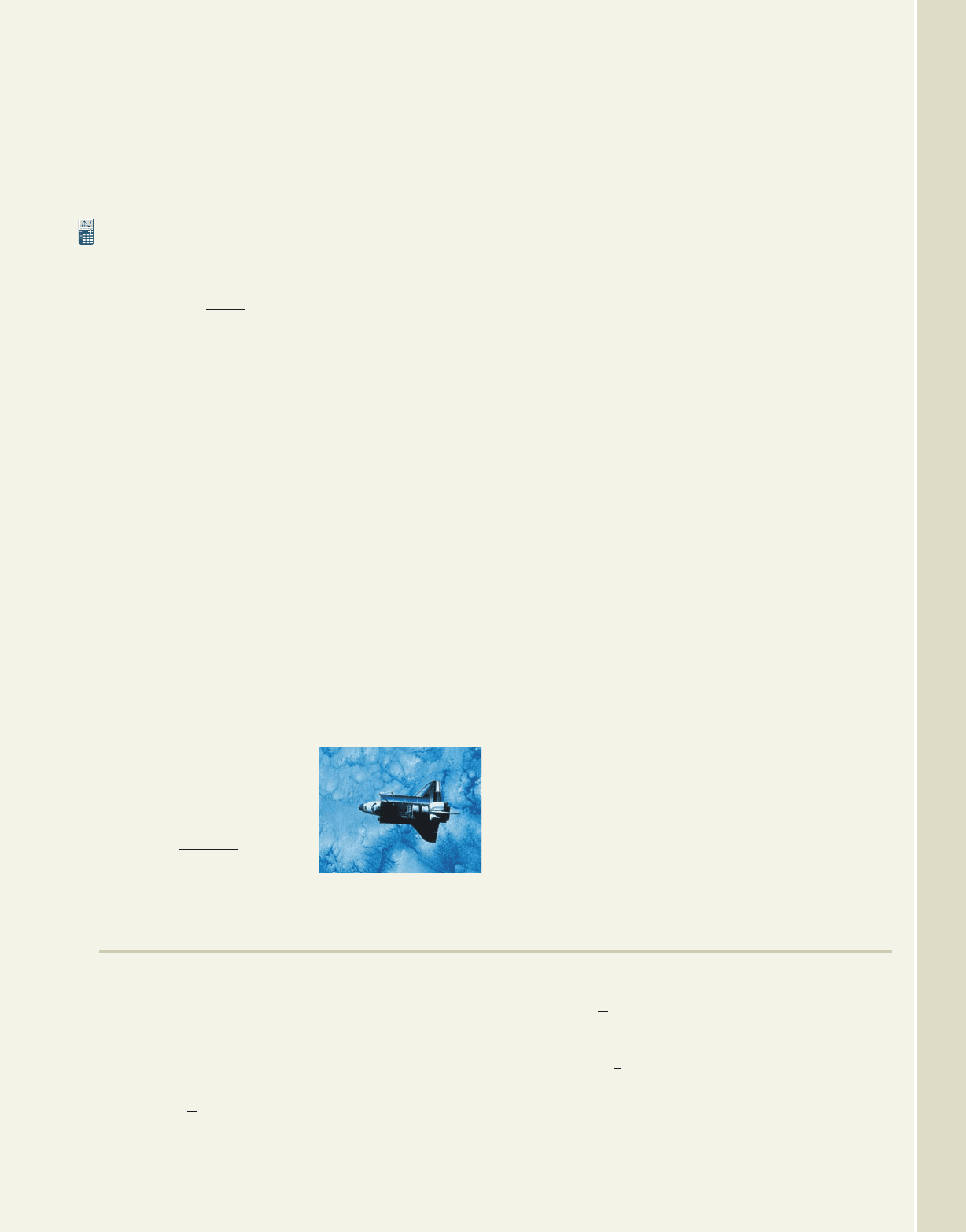
121. Automobile depreciation: If a new car is purchased
for $28,500, find its value 3 yr later if .
122. Home appreciation: If a new home in an “upscale”
neighborhood is purchased for $130,000, find its
value 12 yr later if .
Drug absorption: The time required for a certain
percentage of a drug to be absorbed by the body depends
on the drug’s absorption rate. This can be modeled by the
function , where p represents the percent of
the drug that remains unabsorbed (expressed as a decimal),
k is the absorption rate of the drug, and T(p) represents the
elapsed time.
123. For a drug with an absorption rate of 7.2%,
(a) find the time required (to the nearest hour)
for the body to absorb 35% of the drug, and
(b) find the percent of this drug (to the nearest
half percent) that remains unabsorbed after
24 hr.
124. For a drug with an absorption rate of 5.7%,
(a) find the time required (to the nearest hour)
for the body to absorb 50% of the drug, and
(b) find the percent of this drug (to the nearest
half percent) that remains unabsorbed after
24 hr.
Spaceship velocity: In space travel, the change in the
velocity of a spaceship V
s
(in km/sec) depends on the mass
of the ship M
s
(in tons), the mass of the fuel which has been
burned M
f
(in tons) and the
escape velocity of the exhaust
V
e
(in km/sec). Disregarding
frictional forces, these are
related by the equation
.V
s
V
e
ln a
M
s
M
s
M
f
b
T1p2
ln p
k
k 16
k 5
125. For the Jupiter VII rocket, find the mass of the
fuel M
f
that has been burned if
when , and the ship’s mass is
100 tons.
126. For the Neptune X satellite booster, find the
mass of the ship M
s
if of fuel has
been burned when and
.
Learning curve: The job performance of a new employee
when learning a repetitive task (as on an assembly line)
improves very quickly at first, then grows more slowly over
time. This can be modeled by the function ,
where a and b are constants that depend on the type of task
and the training of the employee.
127. The number of toy planes an employee can
assemble from its component parts depends
on the length of time the employee has
been working. This output is modeled by
, where P(t) is the number
of planes assembled daily after working t days.
(a) How many planes is an employee making
after 5 days on the job? (b) How many days
until the employee is able to assemble 34 planes
per day?
128. The number of circuit boards an associate
can assemble from its component parts depends
on the length of time the associate has
been working. This output is modeled by
, where B(t) is the number of
boards assembled daily after working t days.
(a) How many boards is an employee completing
after 9 days on the job? (b) How long will it take
until the employee is able to complete 10 boards
per day?
B1t2 1 2.3 ln t
P1t2 5.9 12.6 ln t
P1t2 a b ln t
V
e
10 km/sec
V
s
8 km/sec
M
f
75 tons
V
e
8 km/sec
V
s
6 km/sec
4-55 Section 4.4 Properties of Logarithms; Solving Exponential/Logarithmic Equations 465
EXTENDING THE CONCEPT
Use prime factors, properties of logs, and the values
given to evaluate each expression without a calculator.
Check each result using the change-of-base formula:
129. and :
a. log
3
20
b.
c. log
3
25
log
3
4
5
log
3
5 1.4649log
3
4 1.2619
130. and :
a.
b. log
5
216
c. log
5
2
3
6
log
5
9
2
log
5
3 0.6826log
5
2 0.4307
College Algebra—
cob19413_ch04_411-490.qxd 23/10/2008 01:58 PM Page 465 EPG 204:MHDQ069:mhcob%0:cob2ch04:
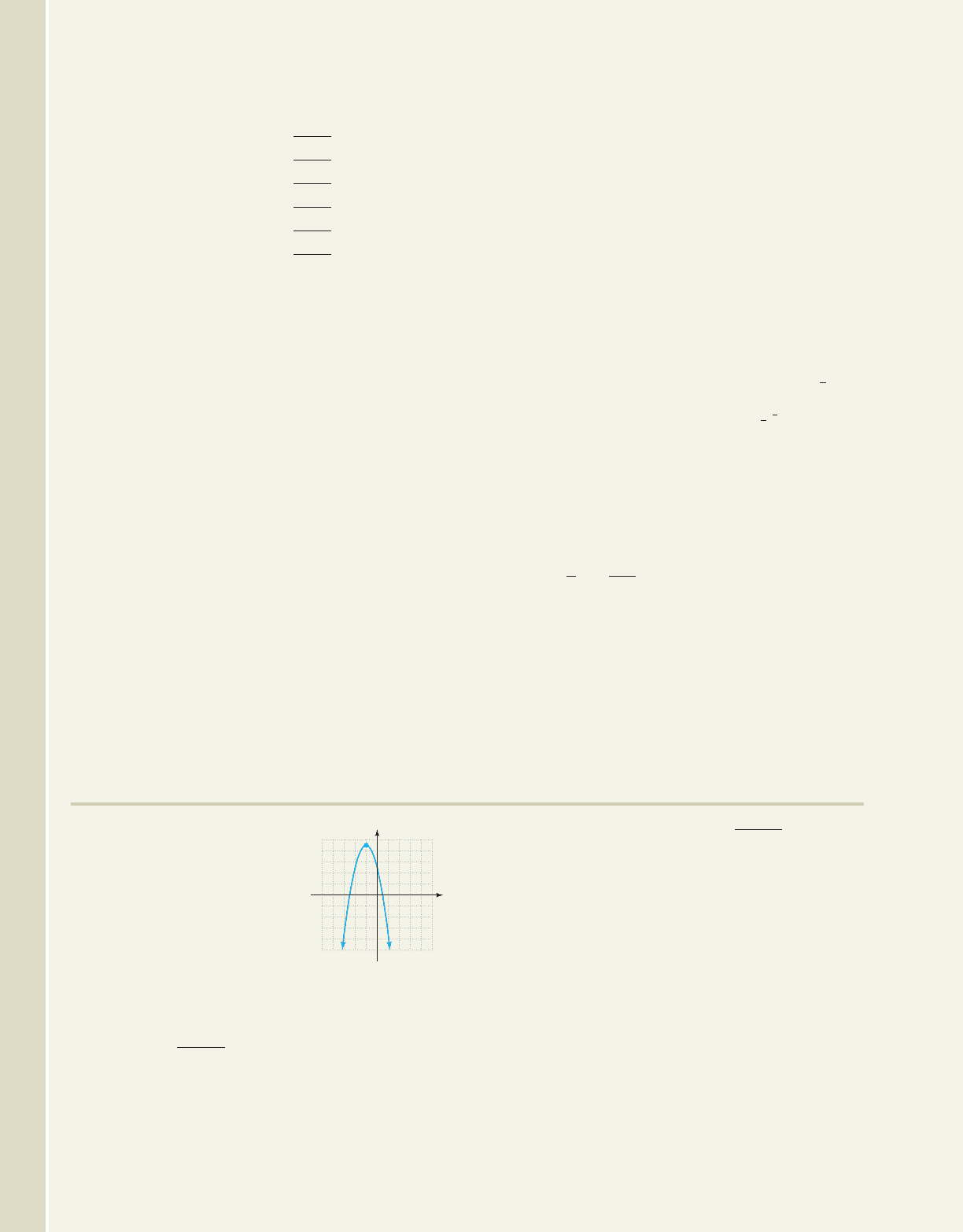
466 CHAPTER 4 Exponential and Logarithmic Functions 4-56
Solve the following equations. Note that equations
Exercises 132 and 133 are in quadratic form.
132.
133.
134.
135. Show that by composing the
functions.
a.
b.
136. Use the algebraic method to find the inverse
function.
a. b.
137. Use properties of logarithms and/or exponents to
show
a. is equivalent to .
b. is equivalent to ,
where
.
138. To understand the formula for the half-life of
radioactive material, consider that for each time
r ln b
y e
rx
y b
x
y e
x ln 2
y 2
x
y 2 ln 1x 32f1x2 2
x1
f1x2 e
x1
; g1x2 ln x 1
f 1x2 3
x2
; g1x2 log
3
x 2
g1x2 f
1
1x2
log
2
1x 52 log
4
121x 12
3e
2x
4e
x
7 3
2e
2x
7e
x
15
increment, a constant proportion of mass m is lost.
In symbols; . (a) Solve
for and factor the right-hand side.
(b) Evaluate the new equation for , and
3, to show that . (c) For any
half-life h, we have .
Solve for , raise both sides to the power t,
and substitute to show .
139. Use test values for p and q to demonstrate that the
following relationships are false, then state the
correct property and use the same test value to
verify the property.
a.
b.
c.
140. Verify that , and discuss why
they’re equal. Then use the relationship to find the
value of ln e, ln 10, and ln 2.
ln x 1ln
1021log x2
ln p ln q ln1p q2
ln a
p
q
b
ln p
ln q
ln
1pq2 ln p ln q
m1t2 m1021
1
2
2
t
h
1 k
m1h2 m10211 k2
h
1
2
m102
m1t2 m10211 k2
t
t 0, 1, 2
m1t 12
m1t 12 m1t2km1t2
MAINTAINING YOUR SKILLS
141. (2.4) Match the graph
shown with its correct
equation, without actually
graphing the function.
a.
b.
c.
d.
142. (3.3) State the domain and range of the functions.
a. b. y
x 2
3y 12x 3
y x
2
4x 5
y x
2
4x 5
y x
2
4x 5
y x
2
4x 5
143. (4.6) Graph the function . Label all
intercepts and asymptotes.
144. (3.6) Suppose the maximum load (in tons) that can
be supported by a cylindrical post varies directly
with its diameter raised to the fourth power and
inversely as the square of its height. A post 8 ft
high and 2 ft in diameter can support 6 tons. How
many tons can be supported by a post 12 ft high
and 3 ft in diameter?
r1x2
x
2
4
x 1
131. Match each equation with the most appropriate solution strategy, and justify/discuss why.
a. apply base-10 logarithm to both sides
b. rewrite and apply uniqueness property for exponentials
c. apply uniqueness property for logarithms
d. apply either base-10 or base-e logarithm
e. apply base-e logarithm
f. write in exponential form
7
x2
23
2
5x3
32
10
2x
97
log1x
2
3x2 2
log12x 32 log 53
e
x1
25
1010
10
x
y
10
College Algebra—
cob19413_ch04_411-490.qxd 25/10/2008 11:56 AM Page 466 EPG 204:MHDQ069:mhcob%0:cob2ch04:
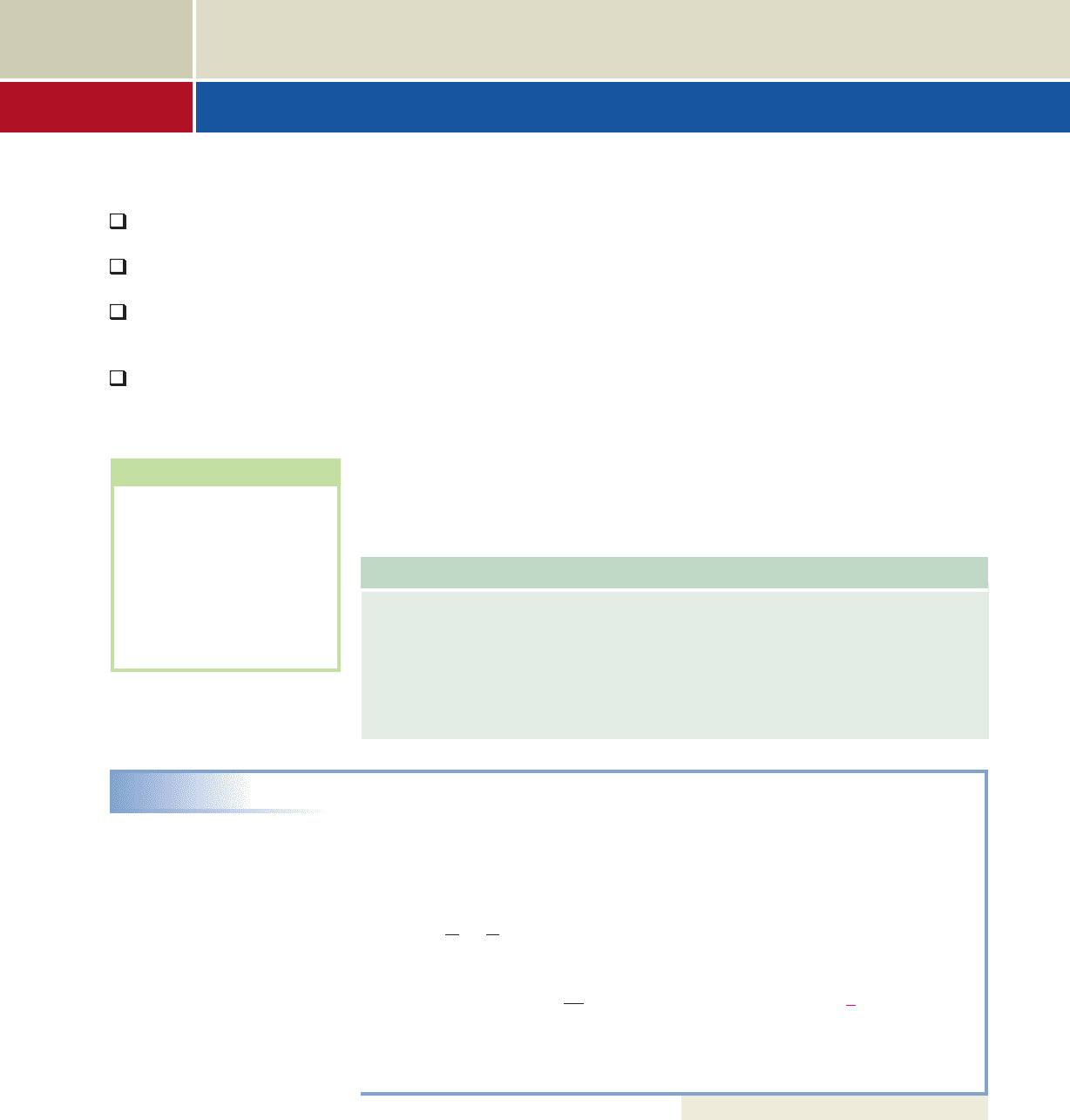
4.5 Applications from Business, Finance, and Science
Learning Objectives
In Section 4.5 you will learn how to:
A. Calculate simple interest
and compound interest
B. Calculate interest com-
pounded continuously
C. Solve applications
of annuities and
amortization
D. Solve applications of
exponential growth
and decay
WORTHY OF NOTE
If a loan is kept for only a
certain number of months,
weeks, or days, the time t
should be stated as a frac-
tional part of a year so the
time period for the rate
(years) matches the time
period over which the loan
is repaid.
College Algebra—
4-57 467
Would you pay $750,000 for a home worth only $250,000? Surprisingly, when a con-
ventional mortgage is repaid over 30 years, this is not at all rare. Over time, the accu-
mulated interest on the mortgage is easily more than two or three times the original
value of the house. In this section we explore how interest is paid or charged, and look
at other applications of exponential and logarithmic functions from business, finance,
as well as the physical and social sciences.
A. Simple and Compound Interest
Simple interest is an amount of interest that is computed only once during the life-
time of an investment (or loan). In the world of finance, the initial deposit or base
amount is referred to as the principal p, the interest rate r is given as a percentage
and stated as an annual rate, with the term of the investment or loan most often given as
time t in years. Simple interest is merely an application of the basic percent equation, with
the additional element of time coming into play: , or
. To find the total amount A that has accumulated (for deposits) or is due (for
loans) after t years, we merely add the accumulated interest to the initial principal:
.
Simple Interest Formula
If principal p is deposited or borrowed at interest rate r for a period of t years, the
simple interest on this account will be
The total amount A accumulated or due after this period will be:
or
EXAMPLE 1
Solving an Application of Simple Interest
Many finance companies offer what have become known as PayDay Loans—a small
$50 loan to help people get by until payday, usually no longer than 2 weeks. If the
cost of this service is $12.50, determine the annual rate of interest charged by these
companies.
Solution
The interest charge is $12.50, the initial principal is $50.00, and the time period is
2 weeks or of a year. The simple interest formula yields
simple interest formula
substitute $12.50 for I, $50.00 for p, and for t
solve for r
The annual interest rate on these loans is a whopping 650%!
Now try Exercises 7 through 16
Compound Interest
Many financial institutions pay compound interest on deposits they receive, which is
interest paid on previously accumulated interest. The most common compounding
periods are yearly, semiannually (two times per year), quarterly (four times per year),
monthly (12 times per year), and daily (365 times per year). Applications of compound
interest typically involve exponential functions. For convenience, consider $1000 in
6.5 r
1
26
12.50 50ra
1
26
b
I prt
2
52
1
26
A p11 rt2A p prt
I prt
A p prt
I prt
interest principal rate time
cob19413_ch04_411-490.qxd 23/10/2008 01:59 PM Page 467 EPG 204:MHDQ069:mhcob%0:cob2ch04:

468 CHAPTER 4 Exponential and Logarithmic Functions 4-58
College Algebra—
principal, deposited at 8% for 3 yr. The simple interest calculation shows $240 in interest
is earned and there will be $1240 in the account: If
the interest is compounded each year instead of once at the start of the 3-yr period,
the interest calculation shows
The account has earned an additional $19.71 interest. More importantly, notice that
we’re multiplying by each compounding period, meaning results can be
computed more efficiently by simply applying the factor to the initial prin-
cipal p. For example,
In general, for interest compounded yearly the accumulated value is
. Notice that solving this equation for p will tell us the amount we need
to deposit now, in order to accumulate A dollars in t years: . This is called
the present value equation.
Interest Compounded Annually
If a principal p is deposited at interest rate r and compounded yearly for a period of
t yr, the accumulated value is
If an accumulated value A is desired after t yr, and the money is deposited at inter-
est rate r and compounded yearly, the present value is
EXAMPLE 2
Finding the Doubling Time of an Investment
An initial deposit of $1000 is made into an account paying 6% compounded yearly.
How long will it take for the money to double?
Solution
Using the formula for interest compounded yearly we have
given
substitute 2000 for A, 1000 for p, and 0.06 for r
isolate variable term
apply base-e logarithms; power property
solve for t
approximate form
The money will double in just under 12 yr.
Now try Exercises 17 through 22
If interest is compounded monthly (12 times each year), the bank will divide the
interest rate by 12 (the number of compoundings), but then pay you interest 12 times
per year (interest is compounded). The net effect is an increased gain in the interest
you earn, and the final compound interest formula takes this form:
total amount principala1
interest rate
compoundings per year
b
11.9 t
ln 2
ln 1.06
t
ln 2 t ln 1.06
2 1.06
t
2000 100011 0.062
t
A p11 r2
t
p
A
11 r2
t
A p11 r2
t
p
A
11 r2
t
A p11 r2
t
A
3
100011 0.082
3
$1259.71.
11 0.082
t
11 0.082
A
3
1166.4011 0.082 1259.71 in the account at the end of year 3.
A
2
108011 0.082 1166.40 in the account at the end of year 2,
A
1
100011 0.082 1080 in the account at the end of year 1,
1t 12
A 100031 10.0821324 $1240.
d
d
(years compoundings per year)
cob19413_ch04_411-490.qxd 23/10/2008 01:59 PM Page 468 EPG 204:MHDQ069:mhcob%0:cob2ch04:
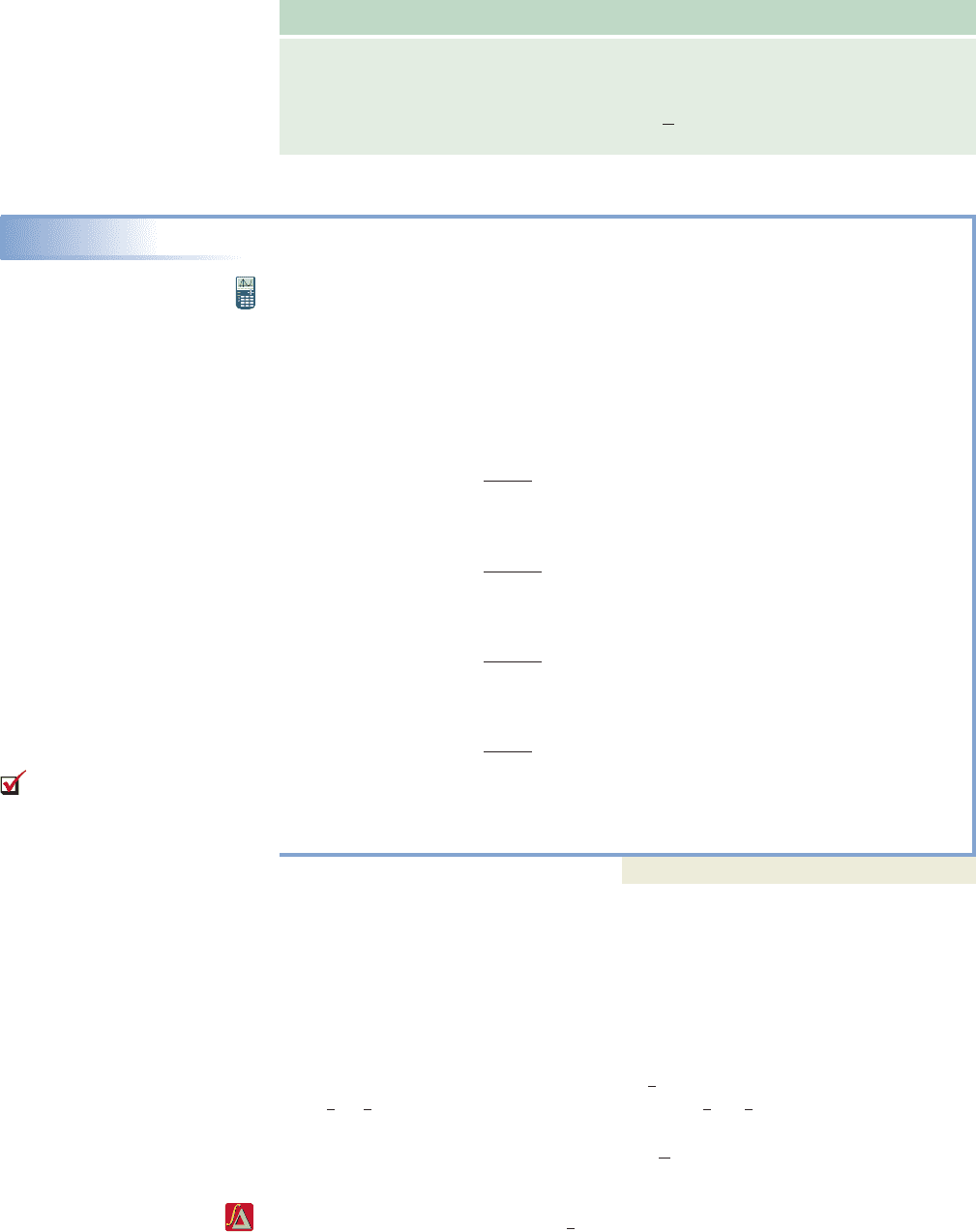
4-59 Section 4.5 Applications from Business, Finance, and Science 469
Compounded Interest Formula
If principal p is deposited at interest rate r and compounded n times per year for a
period of t yr, the accumulated value will be:
EXAMPLE 3
Solving an Application of Compound Interest
Macalyn won $150,000 in the Missouri lottery and decides to invest the money for
retirement in 20 yr. Of all the options available here, which one will produce the
most money for retirement?
a. A certificate of deposit paying 5.4% compounded yearly.
b. A money market certificate paying 5.35% compounded semiannually.
c. A bank account paying 5.25% compounded quarterly.
d. A bond issue paying 5.2% compounded daily.
Solution
a.
b.
c.
d.
The best choice is (b), semiannual compounding at 5.35% for 20 yr.
Now try Exercises 23 through 30
B. Interest Compounded Continuously
It seems natural to wonder what happens to the interest accumulation as n (the number
of compounding periods) becomes very large. It appears the interest rate becomes very
small (because we’re dividing by n), but the exponent becomes very large (since we’re
multiplying by n). To see the result of this interplay more clearly, it will help to rewrite
the compound interest formula using the substitution This
gives , and by direct substitution we obtain the form
by regrouping. This allows for a more careful study of the “denominator versus
exponent” relationship using , the same expression we used in Section 4.2 to
define the number e (also see Section 4.2 Exercise 97). Once again, note what
11
1
x
2
x
A pca1
1
x
b
x
d
rt
1xr for n and
1
x
for
r
n
2
r
n
1
x
n xr.A p 11
r
n
2
nt
$424,351.12
A $150,000a1
0.052
365
b
1203652
$425,729.59
A $150,000a1
0.0525
4
b
12042
$431,200.96
A $150,000a1
0.0535
2
b
12022
$429,440.97
A $150,000a1
0.054
1
b
12012
A pa1
r
n
b
nt
A. You’ve just learned how
to calculate simple interest
and compound interest
College Algebra—
cob19413_ch04_411-490.qxd 23/10/2008 01:59 PM Page 469 EPG 204:MHDQ069:mhcob%0:cob2ch04:
